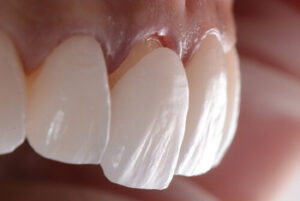Are you dreaming of a stunning smile that can light up a room? Dental veneers provide an excellent solution for improving the look of your teeth, turning discoloured, chipped, or misaligned teeth into a beautiful, confident smile. If you’re considering veneers, Bangkok might be a tempting budget-friendly option. But it would be best to weigh the options between getting them done here in Australia or travelling overseas to a place like Bangkok. So, before you book that ticket, let’s dive into why Australia is the superior choice for getting veneers.
What Are Porcelain Veneers, and Why Should You Consider Them?

Veneers can help you attain a Hollywood smile—a radiant, white, and flawlessly aligned set of teeth that appears both natural and beautiful.
The Growing Trend of Dental Tourism: Is It Worth the Risk?
The popularity of dental tourism has been steadily growing, with many Australians considering travelling overseas to a dental clinic for procedures like veneers. The allure of lower prices and the chance to combine dental work with a holiday can seem tempting. However, while the idea of dental tourism might seem appealing at first glance, there are significant risks and downsides to consider.
The Hidden Dangers of Overseas Dental Treatments
Variable Quality and Standards: Unlike Australia, where dental practices are regulated and held to strict standards, the quality of care in other countries can vary greatly. While some overseas clinics may provide decent care, others might not adhere to the same stringent standards that are mandatory here. This can result in poor outcomes and, in some cases, even harm your dental health.
Lack of Aftercare and Follow-Up: Like many dental procedures, veneers require follow-up appointments to ensure everything is healing correctly and the veneers fit well. In Australia, your dentist is just a phone call away, ready to provide ongoing care and handle any issues that arise. When you go overseas, the lack of accessible aftercare can lead to complications and additional costs if something goes wrong after you return home.
Communication Barriers: Effective communication is vital to any successful dental procedure. You can communicate your needs in Australia and understand your dentist’s advice and instructions. In other countries, language barriers might make it difficult to fully understand the procedure, aftercare instructions, or what to do if complications arise.
Inconsistent Materials and Techniques: The materials and techniques used in overseas dental clinics might not match Australia’s high-quality standards. This could result in veneers that don’t look natural, don’t last as long, or require premature replacement—costing you more in the long run. Even though dental professionals overseas may offer a range of treatments, including dental implants, their qualifications and the materials they use might not meet the stringent standards you would expect in Australia.
Why Australia Is the Best Place for Your Veneers
Getting your veneers in Australia means choosing quality, safety, and peace of mind. Here’s why staying home for your dental work is the smart choice:
Exceptional Standards of Dental Care
Australian dentists are some of the most highly trained professionals in the world. They adhere to rigorous standards, ensuring every patient receives premium care. Whether you’re getting porcelain veneers or composite veneers, you can be confident that the materials used are top-quality, providing a natural look and feel that lasts.
Advanced Technology and Expertise
Australia’s dental clinics have the latest technology, from digital smile design to on-site dental laboratories. This means you receive precise, custom-fit veneers crafted to enhance your unique smile. The advanced techniques used by Australian dentists, combined with the expertise of skilled lab technicians in the dental laboratory, ensure that your veneers are visually appealing and fit perfectly, reducing the risk of issues like tooth sensitivity or damage to surrounding teeth.
Comprehensive Care and Follow-Up
When you choose an Australian dentist, you’re choosing more than just a one-time procedure. You’re investing in comprehensive care that includes thorough follow-up appointments and ongoing support. This personalised approach ensures that your veneers are maintained properly and continue to look great for years to come.
Focus on Your Overall Dental Health
Australian dentists don’t just focus on aesthetics; they prioritise your overall dental health. This means they will consider factors like your bite, good oral hygiene practices, and the health of your natural teeth when planning your veneer treatment. This holistic approach helps prevent issues like tooth sensitivity, ensuring your new smile is beautiful and healthy.
Transparent Pricing with No Hidden Costs
While the estimated cost of veneers might be higher in Australia than in some overseas destinations, it’s essential to consider what’s included in that price. In Australia, the cost typically covers follow-up visits, any necessary adjustments, and comprehensive aftercare. This transparency ensures that you won’t face unexpected expenses down the line, providing real value for your investment.
Understanding the Veneer Process in Australia: The Role of a Dental Laboratory
Getting veneers in Australia is a straightforward process in cosmetic dentistry designed to ensure the most optimal outcome for your smile. Here’s what you can expect:
Initial Consultation
Your path to a new smile starts with a thorough consultation. At this appointment, your dentist will evaluate your dental health, talk about your cosmetic objectives, and decide if veneers are the right option for you.
Personalised Treatment Plan

Tooth Preparation
To ensure a perfect fit, your dentist will prepare your tooth surface by removing a small amount of enamel. This step is essential for achieving a natural look and ensuring that the veneers bond securely to your teeth.
Custom Impressions and Digital Design
Moulds of your teeth will be taken to create customised veneers. Some clinics provide a preview of your new smile, allowing for any necessary adjustments before the final veneers are made.
Veneer Application
Once your veneers are ready, they will be carefully bonded to the front surface of your teeth using a strong adhesive. This process ensures that your veneers are permanently bonded, providing a durable and natural-looking finish.
Final Adjustments and Polishing
After the veneers are in place, your dentist will make any needed adjustments to ensure a perfect fit. The veneers will then be polished to match the natural sheen of your teeth, giving you a radiant and natural smile.
Aftercare and Ongoing Support
Proper aftercare is essential for maintaining your veneers. Your Australian dentist will provide you with detailed instructions on how to care for your new smile and will be available for follow-up appointments to ensure everything is going smoothly.
The Financial Drawbacks of Overseas Treatments
When considering veneers or other dental treatments, the initial appeal of travelling overseas for a lower-cost procedure can be tempting. However, it’s important to look beyond the upfront costs and understand the full financial picture. While the price tag of dental treatments in places like Bangkok may seem significantly lower than in Australia, the hidden costs and risks associated with these procedures often outweigh any initial savings. Here’s why choosing veneers overseas can end up costing you more in the long run:
Unexpected Additional Costs
The advertised prices for veneers at overseas dental clinics often don’t tell the whole story. Many clinics may promote extremely low prices to attract international patients, but these prices frequently exclude additional fees that can quickly add up. These hidden costs might include consultation fees, X-rays, anaesthesia, medications, and post-procedure care.
Moreover, the need for emergency treatments or adjustments can also lead to unexpected expenses. If you experience complications or are unhappy with the results, you might find yourself needing to pay for corrective procedures either abroad or back home in Australia, further adding to the total cost.
Travel and Accommodation Expenses
When you opt for dental treatments overseas, you also need to consider the costs associated with travel and accommodation. Flights, hotel stays, meals, and transportation can significantly increase the overall expense of your dental procedure. In addition, extended stays or multiple trips to the country are often needed for initial consultations, the procedure itself, and follow-up appointments, which can further inflate the total cost.
Even if the cost of veneers in Bangkok appears lower at first glance, the savings can quickly diminish once you factor in these additional expenses. Considering whether these potential costs are worth the risk and inconvenience, especially when high-quality care is available at home is essential.
Costs of Follow-Up Care and Revisions
Proper follow-up care is crucial for the success and longevity of your veneers. In Australia, your dentist provides ongoing support and regular check-ups to ensure your veneers are well-maintained and address any issues. However, when you get your veneers done overseas, returning for follow-up care can be both impractical and expensive.
If complications occur after you return home, such as veneers that don’t fit properly, increased tooth sensitivity, or issues with the tooth structure, you may need to seek out a local Australian dentist to correct these problems. This can involve additional procedures, including replacing poorly fitted veneers or addressing damage to your natural teeth. The costs associated with these corrective treatments can be substantial, often surpassing the initial savings from going abroad.
The Risk of Lower Quality and Its Impact on Cost
One of the most significant financial risks of getting veneers overseas is the potential for lower-quality materials and workmanship. Not all countries have the same stringent regulations and standards as Australia, meaning you might receive veneers not made from high-quality porcelain or composite resin. Poorly made veneers can lead to various issues, from a less natural appearance to reduced durability and increased susceptibility to staining or breakage.
If the veneers do not meet your expectations or fail prematurely due to inferior quality, you will likely have to invest in replacements sooner than anticipated. This can result in additional costs that exceed what you would have paid for high-quality veneers from an experienced Australian dentist. Ultimately, opting for lower-quality treatment abroad can lead to more frequent and costly dental work.
Lack of Insurance Coverage for Overseas Procedures

Without insurance coverage, the financial burden of dealing with any issues that arise from overseas treatment can be significant. It’s important to consider whether the potential short-term savings justify the risk of high out-of-pocket costs in the event of complications.
Investing in Your Smile: Why Staying Local with a Cosmetic Dentist Is the Best Choice
Your smile is one of your most cherished features, and when it comes to enhancing it with veneers, it’s worth investing in quality and safety. By choosing to get your veneers in Australia, you’re not just paying for a procedure—you’re investing in your long-term dental health and confidence.
So, before you consider the risks of dental tourism, remember that the best investment you can make is in your health and well-being. Investing in veneers with a skilled Australian dentist ensures you receive superior quality and achieve a stunning, long-lasting smile. Dental clinics in Australia offer comprehensive follow-up care, giving you peace of mind and confidence in your new look.
Choose Australia for your veneers, and enjoy the peace of mind that comes with knowing you’re in the hands of highly skilled professionals who prioritise your smile and your health.owing you’re in the hands of highly skilled professionals who prioritise your smile and your health.
For more details or to schedule an appointment for veneers, contact Dental 266 at 02 9051 0600.
References:
Minfo. (n.d.). The true cost of dental tourism: Hidden expenses and long-term consequences. Medium. https://medium.com/@minfo/the-true-cost-of-dental-tourism-hidden-expenses-and-long-term-consequences-d8cd38c8dd52
WebMD. (n.d.). Veneers. https://www.webmd.com/oral-health/veneers
Torabinejad, M., & Corr, R. (2020). A brief review on the role of materials and procedures in health care-associated infections. Journal of Advanced Oral Research, 11(1), 5–10. https://www.ncbi.nlm.nih.gov/pmc/articles/PMC7201401/
Cleveland Clinic. (n.d.). Dental impressions: Procedure, benefits, side effects. https://my.clevelandclinic.org/health/diagnostics/22671-dental-impressions
Australian Dental Association. (2016). ADA guidelines for infection control. https://ada.org.au/getmedia/e99d888d-c0ab-4be1-b889-85e5193fd7e7/ADA_Guidelines_Infection_Control_Guidelines.pdf






